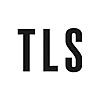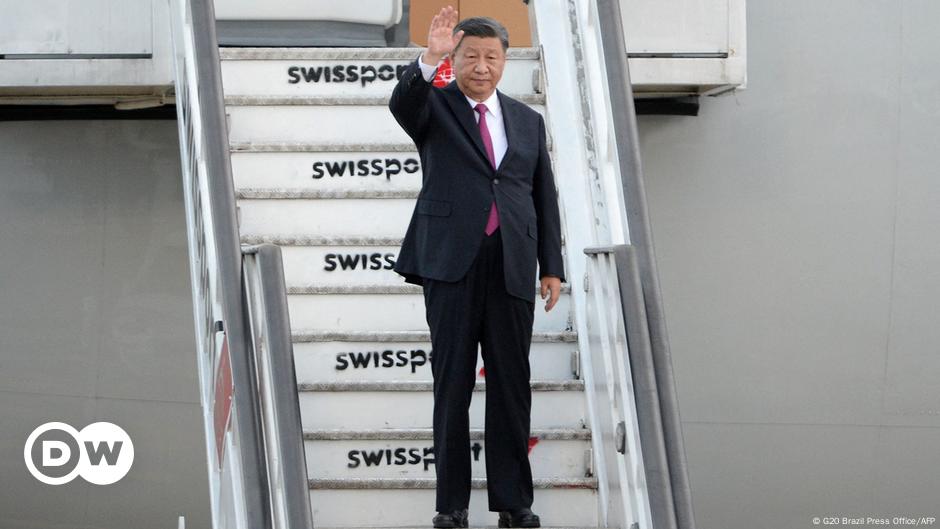Of Polish-Jewish and Anglo-Irish parentage, Henri Bergson was acclaimed by Valéry as the last great and complete European. He negotiated for Europe, on terms of patrician equality, with British and American statesmen and presidents. He presided over the Commission of Intellectual Cooperation of the League of Nations in Geneva after the First World War. Honours, including a Nobel Prize for Literature, poured in from all over the world. Yet Bergson’s career is quintessentially French. It is to France and its “invincible spiritual powers” that he expresses his undying gratitude, his public and private loyalty in the dark days of November 1939. With a will and tactical acumen that never faltered, Bergson made of himself the French mandarin par excellence, the princely figure in the formulaic hierarchies of Gallic academic and rhetorical distinction. No concours, no prize escaped his mastery.
Equally brilliant in mathematics and in letters, Bergson was something of a legend already in his lycée days. He bested Jaurés, a comparably stellar candidate, at the agrégation. His apprenticeship in provincial schoolmastering was relatively brief. The years in Clermont-Ferrand (1883-8) found him giving courses at the university. Recalled to Paris, he published Matière et mémoire in 1896, taught at the École Normale Supérieure and was elected to the Collège de France in 1900. The formidable success obtained by L’Évolution créatrice in 1907 turned Bergson into a household name. His lectures at the Collège, impeccably lucid, stylish in expression, became the mundane hit of Parisian high life. The grandes dames dispatched their valets hours in advance to secure seats. No lecture-hall was spacious enough to accommodate the throng. Translations, popularizations, media coverage disseminated Bergson’s teachings. Poets such as T. S. Eliot and Antonio Machado professed themselves “Bergsonians”. The impact on Proust, a page at Bergson’s wedding in 1892 and a distant relative, was seminal. Immortality in the form of a chair in the French Academy followed in 1914. It became a cliché to say that no one since Voltaire had occupied a comparably magisterial place in the life of the French and of the European mind. A philosophical colloquium at Oxford in 1920 was, despite Bertrand Russell’s perennial dissent, an occasion of general homage. Bergson’s last book, Les Deux Sources de la morale et de la religion, long awaited but published only in 1932, became the topic of worldwide philosophical, psychological, theological and scientific debate on a scale rarely achieved by a difficult philosophy text.
Suffering from rheumatic and arthritic afflictions, unquestionably real but also defensive, as in the case of “little cousin” Proust, Bergson had ceased teaching as early as 1919. His subsequent life took on a valetudinarian cast with prolonged holidays in the Swiss Jura. The decisive work was done, with an economy of effort and a precision of placement which continue to inspire wonder. I will return to Bergson’s grim end.
Roughly speaking, there are, in Western philosophy, two great families. There are those philosophers – Plato, Descartes, Spinoza, Pascal, Leibniz, Russell, Husserl, Wittgenstein – for whom mathematics is a canonic reference and code parallel, if not superior to, verbal discourse. And there are those – Aquinas, Hegel, Schelling, Nietzsche, Heidegger, Sartre – who plunge into the depths of being, of the transcendent, of the meanings of man, but to whom a non-linear equation is an irrelevant mystery. Henri Bergson was vividly of the former. Had he had in him, he confessed in 1926, the substance of an accomplished mathematician, he would not have turned elsewhere. As it was, the notion, the doctrine with which he remains identified has its mathematical correlatives and implications. It has its distant but manifest source in the meta-algebraic paradoxes of Zeno.
As Bergson declares, in his 1902 lectures at the Collège de France, now made available in the first issue of the Annales bergsoniennes, entitled “The History and Concept of Time”, it is an intuition of durée which generates and informs his philosophic vision. This institution took possession of Bergson’s consciousness at Clermont-Ferrand in what may have been a shock of sensibility comparable to “the road to Damascus”. As Gilles Deleuze would put it in his penetrating summations, for Bergson durée defines existence itself. On the one hand, there is the “time” of the mathematician and physicist, of the chronometer without which science and technology would be impossible. On the other, there is “duration”, time as human awareness experiences it (William James’s account of the flux of consciousness arises from an analogous insight). Time past and time future, as articulated by memory and imagination, are made present in ways unaccountable to science. The radicalism of Matière et mémoire consists in Bergson’s ascription to durée not only of a psychological or illusory reality, but a phenomenal existence in the outside world. Only intuition allows access to a reality both psychological and philosophic, a reality determinant for human experience as the mathematically mensurable units of le temps are not. As Bergson was honest enough to concede, this conviction implies asymmetries between objectively perceived space and duration. An attempt to resolve this problem involved Bergson in a somewhat ill-judged controversy with Einstein.
From this duality – Bergson himself allowed the description homo duplex – arose the “dualism” (“dualism” contrary to “dialectic”, says Deleuze) in Bergson’s entire work. His is a “process philosophy”, ancient as Heraclitus, in which objects and events are, as it were, cinematographic views of what is an incessant current. If everyday grammar conceals this truth, it is because its Aristotelian-positivist categories empower pragmatic enterprises and the applications of science. There is here a fleeting coincidence with Heidegger. An inescapable duality affirms the reality of both spirit and matter. Bergson insists that these differ only in degree. Our cognitive experience of the world is inseparable from the nature and substance of the world itself. Perceptions, pace Hume, are always affected by experiences which are – this is Bergson’s crux – informed by memory. What we do is to select those memories indispensable to viable perception. Bergson was wary of what he took to be the determinism in Freud’s model of subconsciousness and recall. To this general doctrine, his essay on laughter, Le Rire (1900), added a brilliant footnote. We laugh when the human body usurps spirit, causing an abrupt, unexpected discontinuity in normality. (Had Bergson come across Kleist’s essay on puppets?)
Unquestionably, humans share instincts and constructive intelligence with animals. But, as L’Évolution créatrice argues, only humans have evolved intuition. Science relies on intelligence, somehow a lesser adjunct. It is solely intuitions which enable us to construe a metaphysical sense of the world and which allow introspection. The miracle to Bergson is self-consciousness, the monologue of spirit and self from which philosophic thought, sentiments and the arts originate. This view will lead Bergson to a special, immensely influential form of vitalism, the famous élan vital which, in ways far more complex than Darwinian evolution, directs man towards an indeterminate yet profoundly progressive goal. Teilhard de Chardin was to be (at the level of kitsch?) an immediate acolyte of Bergson.
As in William James, vitalism modulates into the phenomenology of religion. Bergson’s last major and most difficult book, Les Deux Sources de la morale et de la religion, opposes dynamic religion to closed, ritualistic modes of religiosity. Bergson does not shy from the concept of “mysticism”: “I endeavour to introduce mysticism into philosophy as a procedure for philosophic research”. When reflecting on God, Bergson cites mystical experiences. “God must be said to be transcendent in regard to the world … he could do without the world.” Hence the statement that Bergson’s favourite philosopher has always been Plotinus. If he differs from Plotinus, it is in the belief that perfection is not a state but a dynamism in perpetual motion. This resort to the mystical has its social, indeed political consequences. No rationalist dogma, no utilitarian calculus can underwrite altruism or universalism in respect of mankind. The ultimate validation for these impulses, indispensable to our survival, lodges in modes of psychic intuition, of felt intuition, which can justly be categorized as “mystical”. On this point, a comparison between Bergson and the late John Rawls could prove illuminating.
Deleuze’s tribute to Bergson’s thought cannot be bettered:
un thème lyrique parcourt toute l’oeuvre de Bergson: un véritable chant en l’honneur du nouveau, de l’imprévisible, de l’invention, de la liberté … La philosophic de Bergson s’achève dans une cosmologie où tout est changement de tension et d’énergie, et rien d’autre.
As in certain mathematical domains, the Bergsonian world is undecidable. Therein lies man’s freedom. It is in this liberté that Bergson sees the raison d’être of life on our planet, a liberty rooted in that of the act of creation itself. Sartre is not far distant.
Elegantly set out, annotated with somewhat excessive discretion, André Robinet’s edition of Bergson’s Correspondances extends from 1865 to 1940. There is in these 1,700 pages little of intimacy. Bergson preserved his privacy with fastidious hauteur. Far more often than not, the letters to his peers, colleagues, translators, or disciples came close to public pronouncements. They are direct adjuncts to Bergson’s magisterial teaching and publications. They elucidate and expand on published texts, on lectures and official academic or diplomatic reports. There is hardly any difference in Bergson’s pellucid, courtly prose between the public and the private. A certain chill emanates from this volume. At the same time, it provides an often detailed picture of the high clerisy in the French intellectual and academic worlds, in international cultural affairs for the period before and between the two World Wars. It is an instructive monument to what was called “la république des professeurs”.
Bergson’s voice remains strikingly consistent across the decades. Where the numerous requests for professional support, for recommendation, for testimonials are concerned, the movement is characteristic. One or two initial paragraphs of almost effusive compliments and warmth are followed by a third paragraph expressing more or less regretful reservations, obstacles and abstentions. Bergson’s relations with Charles Péguy are exemplary of this tidal impulse. Bergson voices admiration for Péguy’s mountainous labours, for his independence of spirit and idiosyncratic eloquence. None the less, he commits himself to no effective backing of Péguy’s almost desperate attempts to gain a foothold in the Sorbonne or a measure of recognition from the Académie. Bergson distances himself from Péguy’s profoundly original readings of his philosophy, from his explications of Bergson in relation to Descartes. Then comes a moment almost unique in these letters: Bergson’s message to Péguy on August 11, 1914, is heavy with foreboding: “si vous deviez disparaître (et qui de nous est sûr d’être encore en vie demain?), comptez sur moi, comptez sur ma femme au cas où je ne serai plus là: nous nous occuperions de votre femme et de vos enfants”. Bergson was as good as his word. Financially and more than financially, he supported Péguy’s widow and children during the years to come. (Péguy was killed at the first Battle of the Marne in September 1914.)
Another trait throughout the Correspondance is that of a touch of social snobbery. One is, after all, a cousin of Proust. Exchanges with aristocratic circles clearly please Bergson. The numerous letters and billets addressed to the Comtesse Murat are invariably deferential. It is good to be in touch with the Prince Borgese, with the Marquis Arconati-Visconti, with titled colleagues in the French Academy. Bergson also cultivates his friendship with Colonel House, éminence grise of the White House and with his hosts among high-ranking members of the British Government.
What matter most, however, are the letters to scientists, philosophers, historians and social thinkers, to the family of intellects which gave Europe, from the 1890s to the catastrophe of 1933, its sunset radiance. It is in these missives – to Lévy-Bruhl, Renouvier, E. Halévy, L. Brunschvicg, Giovanni Papini, or Graf Keyserling – that we come across pivotal statements. To J. Baruzzi in October 1902: understanding a work of art “consists essentially in developing in thought what the artists wanted to suggest emotionally”. Georges Sorel’s monograph on Bergson’s “creative evolution” impresses the philosopher. But Sorel on violence frightens him. It is to Sorel, in a capital letter of July 1921, that Bergson summarizes the distinctions to be drawn between systematic-scientific findings and philosophical perceptions whose conditions of truth and of certitude can never be precisely defined. Bergson will reaffirm this creed when he writes, in January 1936, that neither Hegel nor Marx persuades him: both are “une construction et … toute construction philosophique me rend irrémédiablement méfiant”. In philosophy, the quantitative must always be transposed into the qualitative which is seminally intuitive. It is the systematic in psychoanalysis which Bergson finds unacceptable: in January 1924 he writes, “le Freudisme … est devenu brusquement populaire et fait sans doute des dégâts”.
Proud of his own mathematical sensibility, Bergson welcomes discussion with scientists. Is Galileo not, with Descartes, the true initiator of all modern philosophy (to Papini in May 1909)? Hence the correspondence with Borel, the long letter to Lorentz on relativity in November of 1924, the collaboration with Marie Curie at the time of the League of Nations. Hence also the repeated conviction that ancient Greek science and philosophy have “invented precision” in ways at once distinct and profoundly kindred.
Beginning in December 1902, Bergson corresponds with William James. Intellectually and personally, though again with reserve, this was to be one of the most fruitful dialogues in Bergson’s life. Both masters concerned themselves with psychology, with the sources of religious experience, with the possible contributions of clinical discoveries to an understanding of human consciousness. Both pursued an undisguised interest in psychic phenomena and spiritism as it flourished in North American and European circles during the late nineteenth and early twentieth centuries. James facilitated Bergson’s academic-social entrée into New York, Washington and Boston. Reciprocally, Bergson championed translations of James’s books into French and James’s reception in the Gallic academic pantheon. Both were Gifford Lecturers. “We are fighting the same fight”, wrote Bergson to his colleague in January 1908. Yet Bergson was acute enough to remind Fl. Delattre in August 1923 that the analogies between William James’s views and his own, profound as they are, “recouvrent une différence fondamentale”. His “mysticism” and James’s pragmatism (Bergson had been in touch with John Dewey as early as 1912) were of a different order. As it stands, the Bergson-James exchange – although limited in this collection to Bergson’s side – is a fascinating document.
Unavoidably, this tome and the authoritative, though leaden, monograph, Bergson, by Philippe Soulez and Frédéric Worms pose the question of Bergson and Judaism. The evidence is unwelcome. Virtually the whole of Bergson’s intellectual and social milieu was involved in the pain and tensions of the Dreyfus Affair. Bergson professed “indifference”. With reference to matters Jewish, he elaborated a routine of evasion. They simply held no place in his life. When Einstein conveyed to Bergson Chaim Weizmann’s invitation to attend the inauguration of the University of Jerusalem, Bergson declined. There was worse to come. Asked to raise his immensely prestigious voice when Nazism descended on German Jews, Bergson abstained. Anti-Semitism, ruled Bergson, dishonoured civilization. Let the Jews, therefore, “place their case before civilization”. The testament which Bergson drew up in February 1937 contains an appalling proposition: “J’ai beaucoup d’amis, mais le succès m’a aussi valu quelques mortels ennemis (lesquels se trouvent tous être des juifs, mes coreligionnaires). Ils s’acharneront probablement contre ma mémoire après ma mort”.
God’s mills ground swift. Infirm and isolated, Bergson found himself in occupied Paris. Almost every episode reported of his last years is surrounded by hearsay and myth. Revisionists and apologists for Vichy claim that Bergson was accorded special status, that Pétain offered him honorary Aryan identity, that German soldiers presented arms as the aged master came into view. Defenders of Henri Bergson insist that he refused every amelioration, that he wore the yellow star on his very rare outings, that his rations were those accorded other trapped Jews. The mists of legend thicken as we come to Bergson’s dying moments. Did Bergson convert to Catholicism or, at the very last, abstain from doing so? (Simone Weil refused conversion because Roman Catholicism had become infected by Judaism.) Bergson seems to have written to Emmanuel Mounier that he felt nearer and nearer to Catholicism, in which he saw “the complete achievement of Judaism”. He would have converted had it not been for the tide of anti-Semitism now engulfing Europe. Bergson asked for a Catholic priest to come and pray at his graveside:
Au cas où cette autorisation ne serait pas accordée, it faudrait s’adresser à un rabbin, mais sans lui cacher et sans cacher à personne mon adhésion morale au catholicisme, ainsi que le désir exprimé par moi d’abord d’avoir les priéres d’un prêtre catholique.
It was a macabre finale for a homo duplex who had proclaimed to Borel, in a letter of June 1912, that he had no other “concern but the truth”.
Who, today, reads, let alone studies Bergson’s work? This is a difficult question. A tenacious handful of admirers seeks to make the writings and lectures available in authorized form. There have been recent signs of a revival of interest among the younger generation of French intellectuals, disenchanted by Marxism, post-structuralism, or deconstruction. Philosophers such as Deleuze and Alexis Philonenko have published on Bergson in a positive key. But Bergson’s presence in the climate of discussion and reference seems fitful. He lives as a great writer, and it is in this regard that Claude Lévi-Strauss, master of prose, may be Bergson’s truest heir. After decades during which French philosophic and hermeneutic debate was conducted in a jargon of almost impenetrable pretentiousness and opportunistic obscurity, one returns to Bergson with a sense of delight, of philosophic scruple. As in his beloved Plotinus, there is in Bergson a music of thought beyond the vulnerabilities of specific doctrines.
The post Mystic master appeared first on TLS.

 By Times Literary Supplement | Created at 2024-11-24 12:23:19 | Updated at 2024-11-25 00:20:10
12 hours ago
By Times Literary Supplement | Created at 2024-11-24 12:23:19 | Updated at 2024-11-25 00:20:10
12 hours ago








